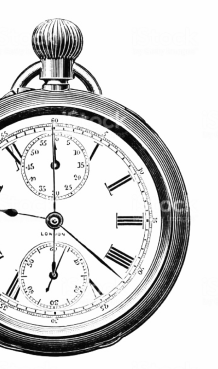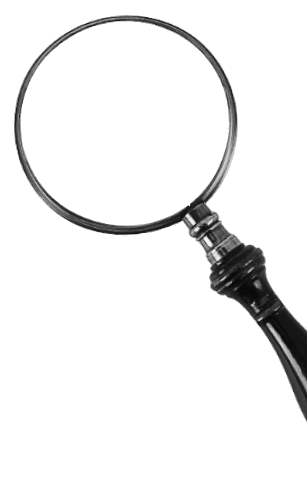Free to Choose? A Symposium on Behavioral Law and Economics
Free to Choose?
A Symposium on Behavioral Law and Economics
December 6-7, 2010
Truthonthemarket.com
Thirty years ago, Milton Friedman launched the PBS television series “Free to Choose” and published a book by the same title. Consistent with Friedman’s central ideas, both the television series and book advocated reliance on the individualized, dispersed power of markets rather than the consolidated power government to protect consumer and workers and fuel innovation and economic growth. Thirty years later, the power of Friedman’s ideas and the ongoing development of markets around the world might have been expected to lead to the spread of this philosophy. Indeed, the final chapter of Free to Choose was entitled “Turning the Tide,” and discussed Friedman’s view (along with his co-author and wife, Rose) that public opinion was “shifting away from a belief in collectivism and toward a belief in individualism and private markets.” Central to Friedman’s work was the view that the economic costs of substituting the judgment of government bureaucrats and regulators for those of individuals, even when the individuals could be expected to err, would far outstrip any benefits of such an approach.
Over the last thirty years, behavioral economics has made a significant contribution to increasing our understanding of when individual decision-making deviates from the rationality assumption at the heart of the conventional microeconomic theory. This literature consists of a number of studies in economics and psychology that find that consumers appear to make various systematic mistakes evaluating probabilities and discounting future values, and, further, that consumers make various choices that appear inconsistent with each other. In addition to the behavioral economics literature, a “behavioral law and economics” school has emerged which typically believes that these studies provide a basis for government interventions in the market to prevent consumers from harming themselves. Some members advocate “soft paternalism” that “nudges” consumers towards what certain scholars deem to be better choices. Other behavioral law and economics scholars advocate “hard paternalism” that renders disfavored choices impractical or illegal, even between willing and informed consumers and providers. “Hard paternalism” interventions include recently proposed “sin” or “vice” taxes aimed at reducing the consumption of junk food, soda, and cigarettes.
Behavioral legal perspectives appear to be gaining traction in the current regulatory landscape, evinced by increasing drive to influence or outright constrain individual choice. Is this in fact the case? If so, what are the main causes? What are the costs and benefits of specific regulatory proposals informed by behavioral law and economics compared to other institutional alternatives? What will be the consequences of the shift toward behavioral regulation? Is the “behavioral” regulatory movement leading to a competitive disadvantage for the U.S. in the world economy, or is the U.S. leading the way toward a more civilized and sophisticated brand of capitalism? Are concerns that “soft paternalism” and “nudges” will slope toward harder forms of paternalism reasonable? If so, how should they inform behavioralist proposals? Has the implementation of regulatory proposals by the behavioral law and economics camp in practice remained faithful to the insights produced by the behavioral economics literature in theory, laboratory experiments and the field? Or have proposed “nudges” merely take the form of default rules which map onto the policy preferences of the academic advocate?
The Truth on the Market blog symposium is designed to begin a intellectual dialogue on these and related topics, bringing together legal scholars and economists with a variety of perspectives on these issues in terms of both methodology and subject-matter expertise. We are hopeful that the discussion is a starting point in identifying areas of agreement, causes for concern, and open questions for future research agendas.
December 6th
Josh Wright, Introduction
David Friedman, Behavioral Economics: Intriguing Research Project, With Reservations
Larry Ribstein, Free to Lose
David Levine, Behavioral Economics: The Good, The Bad, and the Middle Ground
Henry G. Manne, Behavioral Overreach
Geoffrey A. Manne, Interesting Doesn’t Necessarily Mean Policy Relevant
Thom Lambert, Behavioral Economics and the Conflicting Quirks Problem: A “Realist” Critique
Christopher Sprigman & Christopher Buccafusco, Valuing Intellectual Property
Judd E. Stone, Misbehavioral Economics: The Misguided Imposition of Behavioral Economics on Antitrust
Ronald Mann, Nudging From Debt
Richard Epstein, The Dangerous Allure of Behavioral Economics: The Relationship Between Physical and Financial Products
December 7th
Claire Hill, The Promise of Behavioral Law and Economics
Kevin McCabe, Behavioral Economics and the Law
Tom Brown, Camel Spotting: Is Behavioral Economics Really Beyond Redemption?
Christopher Sprigman & Christopher Buffafusco, Behavioral Economics and the Road from Law to Lab
Stephen Bainbridge, Mandatory Disclosure: A Behavioral Analysis
Erin O’Hara, The Free Market Side of Behavioral Law and Economics
Todd Henderson, Project Behavior: What the Battle is Really About
Judd Stone, Behavioral Economics, Administrative Agencies, and Unintended Consequences
Douglas H. Ginsburg & Joshua Wright, A Taxonomy of Behavioral Law and Economics Skepticism
Douglas H. Ginsburg & Joshua Wright, Behavioral Economics: The Never-Ending Quest for a Third Way





